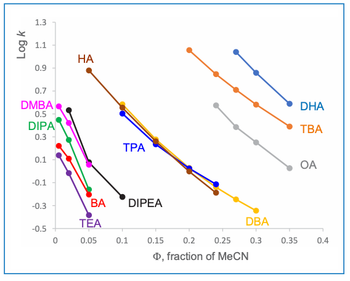Key Points
- L-Tryptophan (TRP) metabolism can yield a range of bioactive compounds with significant implications for human physiology.
- Many methods are used for analyzing TRP, with liquid chromatography–tandem mass spectrometry (LC–MS/MS) being an approach that has recently gained interest.
- Researchers tested combining ultrahigh-performance LC–MS/MS (UHPLC–MS/MNS) with electrospray ionization for quantifying TRP in plasma.
- The method was tested rigorously through compliance with European Medicines Agency (EMA) validation guidelines.
Uppsala University (Sweden) and Czech Academy of Sciences (Czech Republic) researchers developed a new ultra-high performance liquid chromatography-tandem mass spectrometry (UHPLC–MS/MS)-based method for analyzing metabolites in plasma. Their findings were published in the Journal of Chromatography B (1).
In this study, the scientists created and validated an UHPLC–MS/MS methodology with electrospray ionization for simultaneously separating and quantifying tryptophan metabolites in human plasma. Validation was based on guidelines and recommendations issued by the European Medicines Agency (EMA). This process included the evaluation of parameters such as the limit of quantification (LOQ), the linear range of the method for each analyte, carry-over, precision, accuracy, matrix effect (ME), recovery (RE), and stability. Additionally, the method was applied for analyzing target analytes in the body fluids of volunteers.
L-Tryptophan (TRP) is an essential amino acid that is used to make proteins (2). TRP metabolism can yield a range of bioactive compounds with significant implications for human physiology. These effects extend far beyond the neurological domain, exerting influence over various physiological processes. As such, low molecular weight potential biomarkers are being recognized as important parts of the complex molecular landscape linked to different diseases. TRP can be subject to enzymatic processes, such as decarboxylation, hydroxylation, and methylation; this can lead to TRP derivatives being formed in human nervous systems.
Scientists have created many methods for analyzing TRP, each with their own advantages and disadvantages. Chromatographic techniques, such as gas chromatography (GC) and liquid chromatography (LC), in combination with mass spectrometry (MS), are vital for developing analytical chemistry methods. Recently, methods combining liquid chromatography–tandem mass spectrometry (LC–MS/MS) with positive electrospray ionization (ESI+) have attracted great interest. LC–MS/MS-based methods have been successful in determining TRP metabolites in various biological samples using different chemistry of reverse stationary phases. According to the researchers, LC–MS/MS methods do not require chemical derivatization, which makes them preferable to other methods.
The analytical calibration ranges in plasma were 0.50–200 ng/mL for serotonin, 0.01–5 ng/mL for N-acetylserotonin, 0.01–20 ng/mL for tryptamine, 0.01–20 ng/mL for 6-sulfatoxymelatonin, 0.01–20 ng/mL for 6-hydroxymelatonin, 0.01–100 ng/mL for melatonin, and 0.10–20 ng/mL for N-acetyltryptamine. Correlation coefficients ranged from 0.954 for N-acetyltryptamine to 0.997 for tryptamine. Intraday and interday precision consistently remained below 15% for all analytes. Most of the analytes met accuracy criteria, with exception to N-acetyltryptamine; when at the lowest quality control level (0.2 ng/mL), the intraday and interday accuracy were 22.4% and 17.4%, respectively.
The method’s reliability was rigorously tested and confirmed through compliance with EMA validation guidelines with every evaluated parameter yielding satisfactory results.The approach was deemed to be both adaptable and applicable. It follows a simplified sample preparation procedure that involves one-step protein precipitation and extraction, followed by rapid UHPLC–MS/MS analysis; this makes the technique both highly versatile and broadly applicable.
According to the researchers, various application areas could benefit from this analytical approach. Namely, large-scale epidemiological studies that seek to comprehend human metabolic status during normal physiological processes, assess therapeutic interventions (such as dose optimization or treatment efficacy monitoring), and identify changes in TRP metabolism linked to different pathological conditions could benefit from this approach being used. This method can potentially help reveal specific metabolic profiles with clinical significance, including discovering novel biomarkers that could enhance patient care and contribute to overall health systems.
References
(1) Kaleta, M.; Kolitha, B. S.; Novák, O.; Rad, F. M.; et al. Targeted Analysis of Seven Selected Tryptophan-Melatonin Metabolites: Simultaneous Quantification of Plasma Analytes Using Fast and Sensitive UHPLC–MS/MS. J. Chromatogr. B 2025, 1256, 124520. DOI: 10.1016/j.jchromb.2025.124520
(2) L-Tryptophan – Uses, Side Effects, and More. WebMD 2025. https://www.webmd.com/vitamins/ai/ingredientmono-326/l-tryptophan (accessed 2025-5-27)





